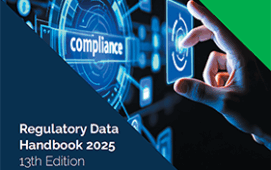
By Angie Walker, Global Head of Capital Markets Business Development at R3.
Businesses across the globe have implemented digital transformation strategies on an unprecedented scale as they battle against the fallout from the coronavirus pandemic – and fund managers are no exception. Fundamental digital transformation requires a totally new approach to the way in which data is shared, transferred and managed. The technology to facilitate this new approach is the key to defending the fund management sector from future shocks, and it’s crucial the industry gets it right.
High stakes
The operational risks that banks faced 12 years ago during the financial crisis have taken on a new form in the complex, ever-growing and evolving investment industry. Meanwhile, regulatory oversight of the banking sector has increased dramatically. In search of improved returns and greater flexibility, many investment activities have, as a result, been channelled through non-bank institutions that fall outside the scope of post-2008 regulatory regimes.
At the peak of the crisis, the non-bank sector controlled assets of $98 trillion. Today, this number has almost doubled to a staggering $180 trillion – significantly higher than overall assets controlled by the banking sector.
The technology choices the investment industry makes today are critical to protecting the health of this hugely important part of the broader financial system. Blockchain is one such transformative technology that handles data in a way that can cut costs, inefficiencies and risks, and help fund management firms steer through unchartered waters into a more resilient future.
Inter-firm data sharing
While there have been technological advancements in investment management over recent years, significant parts of the lifecycle across various asset types continue to remain resource constrained, error prone and deeply inefficient. In particular, processes that rely on inter-firm transfer of data are highly inefficient.
This is because, typically, investment firms have pursued individual technology journeys, optimising everything from messaging to integration, orchestration and process optimisation, but only at the firm level. This lack of inter-firm connectivity has prevented fund managers from developing the capabilities to enable effective intra-day liquidity management. Most of their processes run on batched, overnight processes, forcing them to over-collateralise their balance sheet or access repo markets for additional liquidity when needed.
Another difficulty will be presented by the upcoming uncleared margin rules (UMR) that force funds to post and receive collateral much more frequently. Without real-time inter-firm connectivity, discrepancies on portfolio values will add complexity to an already costly and inefficient process.
Some of the most pressing industry-wide challenges, such as these, traditionally couldn’t be solved without changing the structure of the market through the introduction of a new central player. That is, until now.
Shared market-level applications
So what’s changed? The answer is the creation of enterprise blockchain. But this answer is somewhat misleading because not all enterprise blockchains have been designed for the same purpose, and the enabling technology and environment is not all new – for example the maturation of crypto techniques, consensus algorithms and emergence of industry consortia.
However, the explosion of interest in blockchain technology has served as a catalyst that has made many in the investment industry – and the technology firms serving it – realise that it needs to move to common data processing and not just data sharing at the level of markets and, in so doing, transform markets for the better.
Moving from a world where every firm builds and runs its own distinct applications, which are endlessly out of sync, to one where everybody is using shared market-level applications,
dramatically drives down deviations and errors. Blockchain can achieve this by ensuring the facts that all parties to a transaction care about – such as who can update which records, when and in what ways – are documented in deterministically executed code in a way that eliminates critical sources of error or opportunities for inconsistency.
By bringing fund distributors, transfer agents, custodians and other intermediaries involved in the buying and selling of units in a fund onto a distributed ledger, the reduction in inefficiency, risk, disputes and unnecessary costs are nothing short of dramatic. Further, by identifying and ruthlessly eliminating all the places where disagreements, ambiguity and doubt can enter the process, the rest of the process can be executed like a train on rail tracks.
This can radically transform processes that investment institutions rely on, from KYC to trade execution, post-trade processing, identity management and much more. Enterprise blockchain platforms achieve some of their magic because they make seemingly trivial improvements to inter-firm data sharing and, in so doing, dramatically drive up levels of automation and consensus.
This technology will shape the investment industry of tomorrow. Digital transformation and this new approach to data management can safeguard this critical sub-sector of financial services from the inevitable aftershocks of the pandemic.
Subscribe to our newsletter




